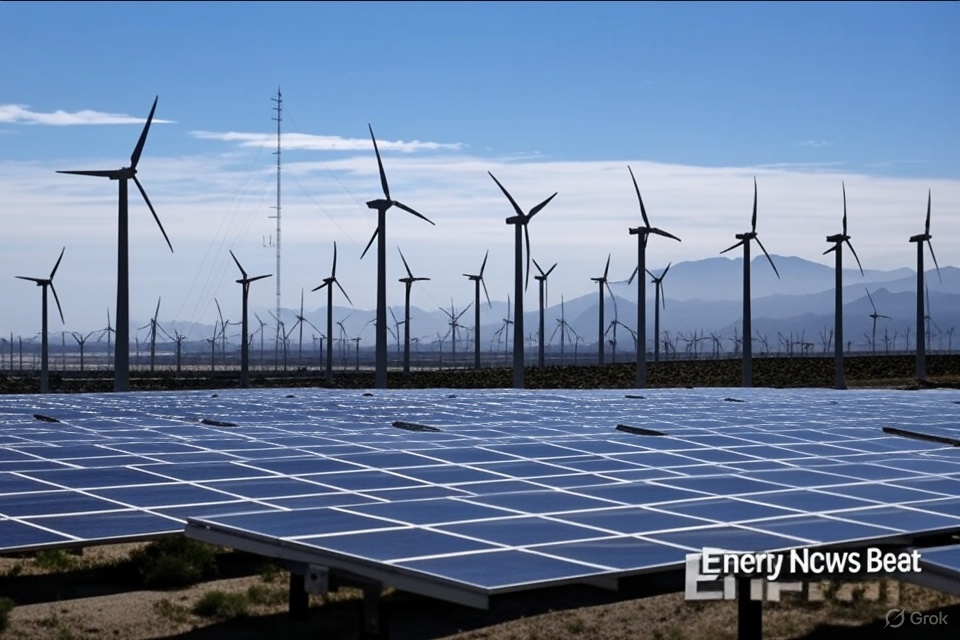In a surprising turn for the renewable energy sector, solar stocks have surged following the Trump administration’s latest guidance on tax credits for wind and solar projects. Released on August 15, 2025, the new rules from the Treasury Department tighten eligibility requirements but fall short of the draconian measures many in the industry had anticipated.
This “softer than feared” approach has injected optimism into the market, driving significant gains in clean energy equities and signaling renewed investor interest in solar plays.The guidance comes amid broader policy shifts under President Trump’s second term, particularly following the signing of what he has dubbed the “big new beautiful bill”—formally known as the reconciliation bill passed on July 4, 2025.
This massive tax-and-spending legislation includes provisions for renewable energy incentives, but the administration has moved swiftly to curb what it views as overly generous subsidies for wind and solar. Despite the squeeze, the market’s reaction suggests the hit isn’t as severe as expected, preserving pathways for funding and spurring a rally in solar shares.
Are you from California, New Jersey or New York and need a tax break?
Policy Updates: A Squeeze, But Not a Stranglehold
The Treasury’s new guidance redefines when a project is considered to have “begun construction” for tax credit eligibility, a critical factor under the bill’s framework.
Previously, developers could qualify with minimal upfront commitments, such as securing contracts or making small deposits (the so-called 5% safe harbor). Now, larger utility-scale projects must demonstrate substantial physical work—such as excavating foundations or installing equipment—to lock in credits.
This change could delay or derail some developments, with estimates suggesting over 2,500 announced wind and solar projects might be affected if they haven’t broken ground.
However, key concessions have tempered the blow. Residential solar installations can still qualify under prior, more lenient rules, providing relief for homeowners and smaller-scale adopters.
Crucially, the rules won’t apply retroactively, protecting projects already in the pipeline.
Industry insiders and analysts view this as a win, avoiding the worst-case scenario of widespread credit clawbacks that could have crippled the sector.Funding from the “big new beautiful bill” remains accessible, but with these guardrails. The legislation, signed into law on Independence Day 2025, allocates billions in tax credits to boost domestic energy production, including renewables—though Trump’s rhetoric has emphasized fossil fuels and criticized wind and solar as “ugly” and inefficient.
Developers can still tap into these funds by meeting the updated construction thresholds, encouraging faster project execution. Senate Republicans, including vocal defenders like Sen. Chuck Grassley, have pushed back against the changes, seeking meetings with Treasury to advocate for looser interpretations.
Legal challenges are also on the horizon, as stakeholders argue the guidance oversteps the bill’s intent.
Solar Stocks on the Rise: Key Players Investors Are Eyeing
The market wasted no time reacting to the news, with solar shares leading a broader clean energy rally on August 15 and 16, 2025. Investors appear to be betting that the sector’s growth trajectory—fueled by the bill’s incentives—will endure despite the tweaks.
Solar power accounted for over 60% of new U.S. electricity generation in 2024, and the bill’s funding is seen as a catalyst for continued expansion.
Here are some standout stocks and companies drawing investor attention, based on recent trading data and sentiment:
|
Company
|
Ticker
|
Recent Gain (as of Aug 16, 2025)
|
Why Investors Are Interested
|
|---|---|---|---|
|
First Solar
|
FSLR
|
+12.77%
|
Leading thin-film solar manufacturer; benefits from domestic production credits in the bill; strong pipeline of utility-scale projects.
|
|
Sunrun
|
RUN
|
+39.17%
|
Top residential solar installer; shielded by the residential carve-out; expanding battery storage integration.
|
|
SolarEdge Technologies
|
SEDG
|
+24.50%
|
Inverter and optimizer specialist; rebounding from policy uncertainty; focus on smart energy solutions.
|
|
Enphase Energy
|
ENPH
|
+11.3%
|
Microinverter leader; gains from residential solar resilience; innovation in energy management tech.
|
|
Nextracker
|
NXT
|
+12.08%
|
Solar tracking systems provider; utility-scale focus aligns with physical construction requirements.
|
|
JinkoSolar
|
JKS
|
+8.20%
|
Major panel producer; global supply chain advantages; potential for U.S. manufacturing incentives.
|
|
Canadian Solar
|
CSIQ
|
+10.45%
|
Integrated solar company; diversified projects; eyeing bill-funded expansions.
|
|
Array Technologies
|
ARRY
|
+27%
|
Tracker manufacturer; benefits from accelerated construction timelines.
|
|
NextEra Energy
|
NEE
|
+5.9%
|
Utility giant with massive solar portfolio; stable dividends attract long-term investors.
|
These gains reflect a broader ETF uptick, such as the Invesco WilderHill Clean Energy ETF (PBW), which also rose amid the news.
Investors are particularly drawn to companies with strong residential exposure or those poised to meet the new construction standards quickly, viewing the bill’s funding as a net positive despite the hurdles.Timelines: From Bill Signing to Market RallyJuly 4, 2025: Trump signs the “big new beautiful bill” into law via reconciliation, establishing tax credits for renewables but setting the stage for administrative tweaks.
Early August 2025: Frustration builds among GOP senators and industry groups as Treasury signals tighter guidance; over 2,500 projects hang in the balance.
August 14, 2025: Treasury prepares to release guidance, heightening market anxiety.
August 15, 2025: Guidance drops, proving less restrictive; solar shares begin soaring immediately.
Ongoing (August 2025 onward): Projects must adapt to physical construction rules; potential legal challenges and congressional pushback could extend timelines.
Developers aiming for 2025 credits should prioritize groundbreaking to secure funding.
While the Trump administration’s moves have drawn criticism for potentially stifling blue-collar jobs in solar—one of the fastest-growing sectors—the market’s upbeat response underscores resilience.
As the dust settles, investors are positioning for a solar boom under the bill’s umbrella, betting that American innovation will outpace policy headwinds. Stay tuned to Energy News Beat for more updates on this evolving story.
Is Oil & Gas Right for Your Portfolio?
Crude Oil, LNG, Jet Fuel price quote
ENB Top News
ENB
Energy Dashboard
ENB Podcast
ENB Substack

